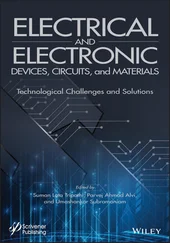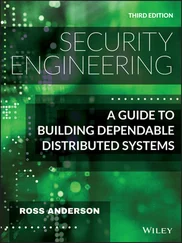1 Cover
2 Title page
3 Copyright
4 Dedications
5 Foreword
6 Acknowledgements
7 1 Introduction to Electric Power Systems 1.1 Introduction 1.2 Three-Phase Supply Connections 1.3 Power 1.4 Power Factor (PF) 1.5 Types of Loads 1.6 Three-Phase Power Measurement 1.7 Overview of Power Systems 1.8 Protection of Power System References
8 2 Transformers2.1 Introduction 2.2 Transformer Magnetics 2.3 Construction of Transformer 2.4 EMF Equation of a Transformer 2.5 Ideal Transformer 2.6 Transformation Ratio (K) 2.7 Circuit Model or Equivalent Circuit of Transformer 2.8 Voltage Regulation of Transformer 2.9 Name Plate Rating 2.10 Efficiency of Transformer 2.11 Three-Phase Transformer 2.12 Components of the Transformer 2.13 Standards for Transformers References
9 3 DC Machines3.1 Introduction 3.2 Operation of DC Machines 3.3 EMF Equation of DC Generator 3.4 Torque Equation of a DC Motor 3.5 Circuit Model 3.6 Methods of Excitation 3.7 Characteristics of DC Generator 3.8 Types of DC Motor 3.9 DC Motor Characteristics 3.10 Necessity for Starters 3.11 Speed Control of DC Motors 3.12 Universal Motor References
10 4 AC Machines4.1 Introduction 4.2 Three-Phase Induction Motor 4.3 Single-Phase Induction Motor 4.4 Starting Methods of Induction Motor 4.5 Speed Control of Three-Phase Induction Motor 4.6 Synchronous Motor 4.7 Stepper Motor 4.8 Brushless DC (BLDC) Motor 4.9 Alternator 4.10 Standards for Electric Machines References
11 5 Measurement and Instrumentation 5.1 Electrical and Electronic Instruments 5.2 Cathode Ray Oscilloscope (CRO) 5.3 Digital Storage Oscilloscope 5.4 Static and Dynamic Characteristics of Measurements 5.5 Measurement of Errors 5.6 Transducer References
12 Index
13 End User License Agreement
1 Chapter 1Figure 1.1 Waveform of AC.Figure 1.2 Waveform of DC.Figure 1.3 Peak to peak voltage of R phase to Y phase. Note: This figure is capt...Figure 1.4 Peak voltage trend. Note: This figure is captured using Dranetz Power...Figure 1.5 Three-phase, Four-wire circuit configuration.Figure 1.6 Three-phase, Three-wire circuit configuration.Figure 1.7 Vector displacement of three phases.Figure 1.8 Phase angle displacement of three-phase voltage waveform in time doma...Figure 1.9 Phase angle displacement of three-phase voltage waveform in angular f...Figure 1.10 Three-phase, four-wire circuit configuration.Figure 1.11 Single-phase, two-wire system.Figure 1.12 40 W bulb connected across 240 V supply.Figure 1.13 Direction of current flow for positive half cycle.Figure 1.14 Direction of current flow for negative half cycle.Figure 1.15 Circuit diagram of single-phase AC supply feeding R Load.Figure 1.16 Current wave shape in kA.Figure 1.17 RMS current trend in kA.Figure 1.18 Time period. Note: This figure is captured using Dranetz Power Quali...Figure 1.19 Voltage frequency.Figure 1.20 Phase angle between voltage and current. Note: This figure is captur...Figure 1.21 Star circuit connection.Figure 1.22 Name plate details of AC generator (Courtesy: Stamford).Figure 1.23 Name plate details of transformer (Courtesy: Toshiba).Figure 1.24 Terminal connection of transformer secondary side - star winding.Figure 1.25 Delta circuit connection.Figure 1.26 Practical connection or forming delta circuit in transformer.Figure 1.27 Practical connection or forming delta circuit in transformer.Figure 1.28 Balanced delta circuit.Figure 1.29 Balanced star circuit.Figure 1.30 Name plate details of three phase induction motor (Courtesy: TECO).Figure 1.31 Star to delta conversion.Figure 1.32 Delta to star conversion.Figure 1.33 Single phase, 240V circuit powering resistive (5 Ω) load.Figure 1.34 Three-phase, 415V balanced circuit powering the resistive load (5 Ω/...Figure 1.35 Three-phase, 415V unbalanced circuit.Figure 1.36 Single phase, 240V circuit.Figure 1.37 Three-phase, 415V balanced circuit.Figure 1.38 Three phase, 415V unbalanced circuit.Figure 1.39 Power triangle.Figure 1.40 Single-phase circuit powering 1000 W focus lamp.Figure 1.41 Three-phase, balanced circuit.Figure 1.42 Three phase, 415V unbalanced circuit.Figure 1.43 Circuit diagram of pure resistive load.Figure 1.44 Voltage and current relation for unity power factor load.Figure 1.45 Schematic diagram.Figure 1.46 Voltage and current wave shape for unity power factor load. Note: Th...Figure 1.47 kW, kVA and PF trend.Figure 1.48 Circuit diagram of ideal inductor.Figure 1.49 Voltage and current relation for lagging power factor load.Figure 1.50 Schematic diagram.Figure 1.51 Instantaneous voltage and current wave shape (R phase) of 5 HP induc...Figure 1.52 Real, apparent power and power factor trend of 5 HP induction motor.Figure 1.53 Circuit diagram for an ideal capacitor.Figure 1.54 Voltage and current relation for leading power factor load.Figure 1.55 Schematic diagram of power distribution.Figure 1.56 Instantaneous voltage and current wave form of capacitor.Figure 1.57 kW, kVA and PF trend for leading PF load.Figure 1.58 Power factor improvement by capacitor bank.Figure 1.59 Power factor improvement by synchronous condensor.Figure 1.60 Linear voltage – current relationship.Figure 1.61 Non-linear voltage – current relationship.Figure 1.62 Current coil.Figure 1.63 Pressure coil.Figure 1.64 Two-Wattmeter method for three-phase power measurement.Figure 1.65 Three-Wattmeter method power measurement.Figure 1.66 General structure of power system.Figure 1.67 Installation of generator at actual site.Figure 1.68 Installation of transformer at actual site.Figure 1.69 Installation of transmission lines 110 kV single circuit.Figure 1.70 Installation of transmission lines 220 kV double circuit.Figure 1.71 Installation of transmission lines.Figure 1.72 Installation of primary distribution line 11 kV single circuit.Figure 1.73 Installation of secondary distribution line 415 V.Figure 1.74 Installation of underground cables in buried cable trench.Figure 1.75 Flow chart of power system protection.Figure 1.76 CTs at 11 kV (Courtesy: Schneider Electric).Figure 1.77 100/1 A CT.Figure 1.78 VTs at 11 kV.Figure 1.79 Instantaneous earth fault relay (Courtesy: Alstom).Figure 1.80 Instantaneous over voltage relay (Courtesy: Areva).Figure 1.81 Installation of SF 6breaker.
2 Chapter 2Figure 2.1 Typical SLD of power system.Figure 2.2 Typical configuration of two-winding transformer.Figure 2.3 Waveform of high voltage side of two-winding transformer.Figure 2.4 Waveform of low voltage side of two-winding transformer.Figure 2.5 Core of three-phase power transformer (Courtesy: Andrew Yule).Figure 2.6 Relationship of B-H curve.Figure 2.7 CGL power transformer laminated core (Courtesy: CGL power transformer...Figure 2.8 Path of eddy current.Figure 2.9 Core-type transformer.Figure 2.10 L shape stamping.Figure 2.11 Core-type transformer.Figure 2.12 E & I shape stamping.Figure 2.13 Typical step-down transformer.Figure 2.14 Flux on the transformer core.Figure 2.15 The ideal transformer.Figure 2.16 Voltage – current relationship of an ideal transformer.Figure 2.17 Phasor diagram.Figure 2.18 Circuit diagram.Figure 2.19 No load equivalent circuit.Figure 2.20 Equivalent circuit of a transformer under load in secondary side.Figure 2.21 Secondary circuit referred to the primary circuit.Figure 2.22 Primary circuit referred to the secondary circuit.Figure 2.23 Approximate equivalent circuit.Figure 2.24 Equivalent circuit.Figure 2.25 Voltage regulation of a transformer.Figure 2.26 Typical name plate rating of a transformer (Courtesy: Voltamp transf...Figure 2.27 Arrangement of a three-phase transformer.Figure 2.28 Star – Star configuration of three-phase transformer.Figure 2.29 Delta – Delta configuration of three-phase transformer.Figure 2.30 Star – Delta configuration of three-phase transformer.Figure 2.31 Delta – Star configuration of three-phase transformer.Figure 2.32 Winding configuration step-down auto transformer.Figure 2.33 Winding configuration step-up auto transformer.Figure 2.34 Typical oil type transformer.Figure 2.35 Typical dry type transformer.Figure 2.36 Typical power transformer.Figure 2.37 Silica gel.Figure 2.38 Cooling tubes.Figure 2.39 Low voltage side bushing of power transformer.Figure 2.40 High voltage side bushing of power transformer.Figure 2.41 Low voltage side – star point earthing of power transformer.Figure 2.42 Conservator tank of distribution transformer.Figure 2.43 Bushing of low voltage side of power transformer.Figure 2.44 Breather with silica gel.
Читать дальше












